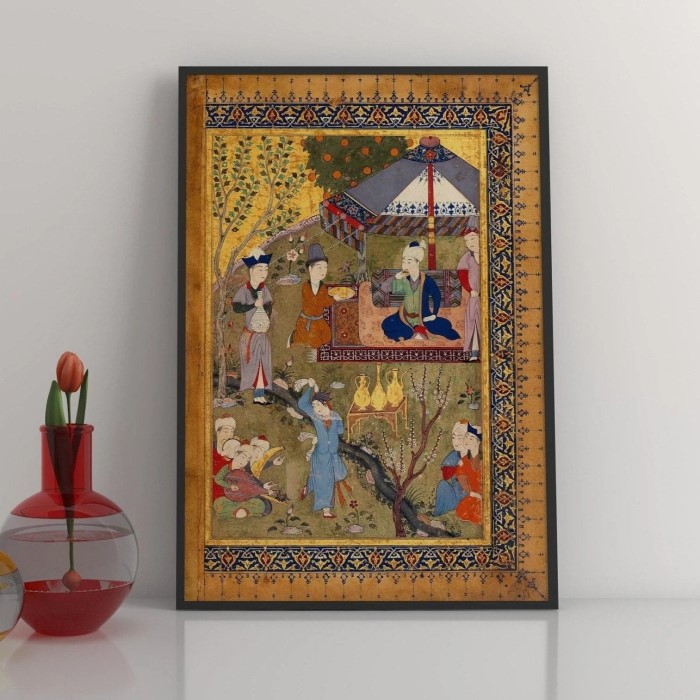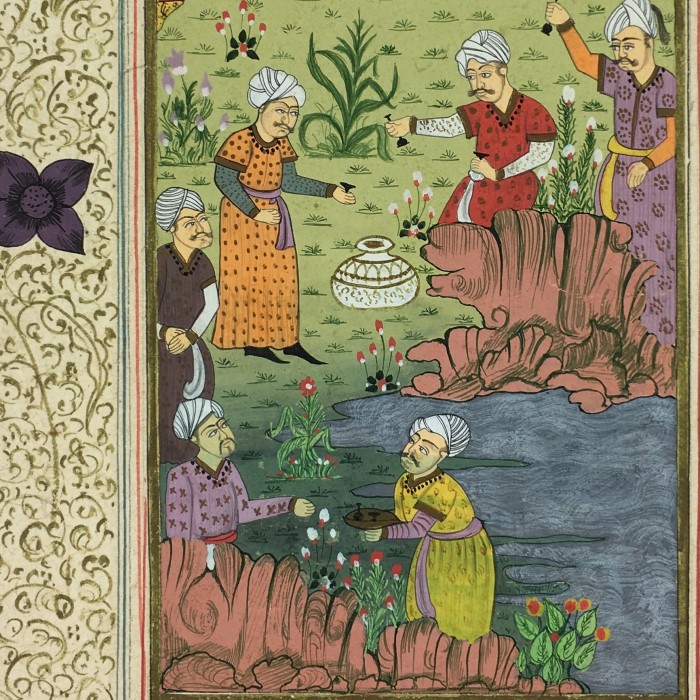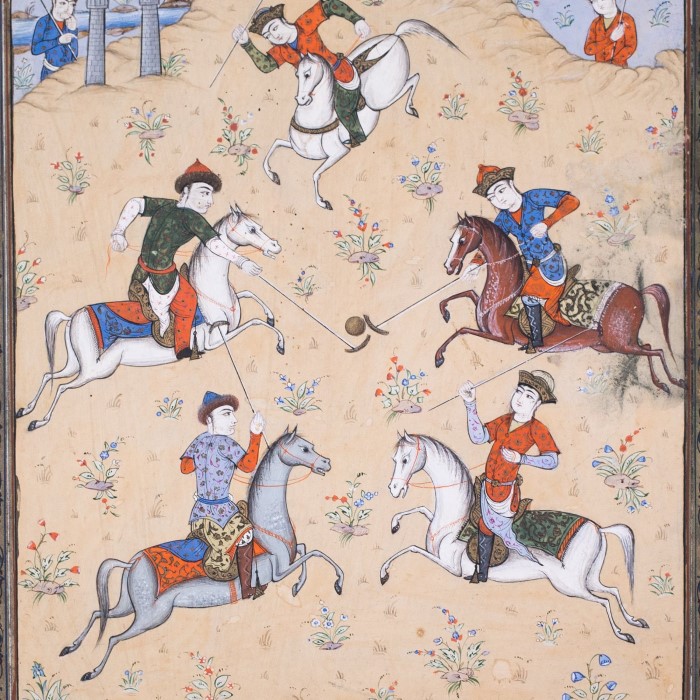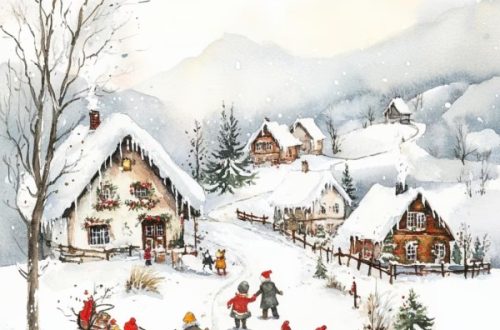Introduction
Persian miniature painting stands as one of the most enchanting art forms in the world. Rooted in the rich cultural history of Persia, now known as Iran, this intricate style of painting combines vibrant colors, detailed imagery, and a deep connection to Persian literature and history. Artists have employed these techniques for centuries, creating works that transport viewers into a world of stories and emotion. In this article, we will explore the unique characteristics, historical significance, and techniques used in Persian miniature painting to understand why it remains a timeless art form.
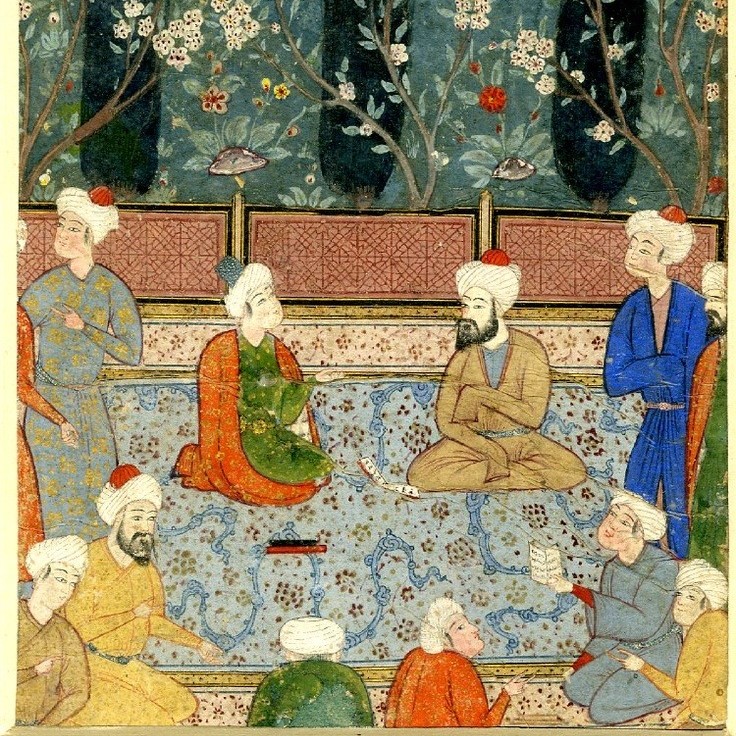
The Historical Context
The origins of Persian miniature painting can be traced back to the 13th century during the Mongol invasion of Persia. This period saw the fusion of Persian art styles with influences from the East, particularly from China and the Central Asian regions.
Early Development
- Influence of Islamic Art: The arrival of Islam in Persia led to significant developments in the arts, including painting. Persian artists adopted the calligraphy styles and intricate geometric patterns typical of Islamic art, integrating these elements into their miniatures.
- Timurid Period: The production of Persian miniatures flourished during the Timurid dynasty (1370-1507).
The Safavid Era
- Golden Age: The 16th to the 18th centuries marked the Golden Age of Persian miniature painting. Under the Safavid dynasty, these artworks reached their peak in terms of detail, technique, and expression.
- Cultural Significance: Miniatures during this time were not merely decorative. They served as important cultural artifacts, often illustrating tales from Persian literature, such as the Shahnameh (Book of Kings) and other classical works.
Key Characteristics
Persian miniature paintings are defined by specific characteristics that distinguish them from other art forms. Understanding these features is key to appreciating the intricacies of this timeless art.
Vibrant Color Palette
- Bold and Vivid Colors: Persian artists frequently used vibrant colors made from natural minerals and organic materials employed to concoct the pigments.
- Symbolic Meaning: Each color often holds symbolic significance. For instance, blue can symbolize heaven, while red might represent passion or war.
Detail and Precision
- Intricate Detailing: One of the most remarkable aspects of Persian miniatures is the level of detail. Artists used fine brushes to create intricate patterns and designs.
- Attention to Features: Characters are often depicted with exaggerated facial features and postures, creating a distinct narrative quality.
Narrative and Symbolism
Storytelling Element:
- Narrative Focus: Each Persian miniature painting serves as a visual narrative, often drawing inspiration from classical literature, mythology, or significant historical events, which adds depth and context to the artwork.
- Intricate Compositions: The compositions of these miniatures are carefully crafted, with each scene designed to guide the viewer’s eye through the story. Artists use detailed arrangements of characters and objects to enhance the narrative flow.
- Character Interactions: Within these paintings, characters are depicted in dynamic poses and expressions, engaging with one another in meaningful ways. This interaction brings the story to life, inviting viewers to explore the relationships and emotions portrayed.
- Richly Painted Landscapes: The backgrounds of the miniatures are often adorned with vibrant. These environments contribute to the overall mood and atmosphere of the narrative.
- Symbolism and Detail: Artists incorporate symbolic elements and intricate details that add layers of meaning to the story.
Cultural Reflections:
- Reflection of Values: The narratives depicted in Persian miniatures frequently mirror the social values and philosophical beliefs of Persian culture, providing insight into the priorities and ideals of the time.
- Themes of Love: Love is a prevalent theme in many miniatures, often illustrated through romantic or idealized portrayals of characters. These depictions celebrate the concept of love in its various forms, from passion to devotion.
- Heroism and Valor: Many stories told through miniature paintings highlight themes of heroism, showcasing legendary figures who embody courage and integrity. These portrayals often serve to inspire and instill a sense of pride in cultural heritage.
- Spirituality: Spiritual themes are also prominent, reflecting the deeply rooted religious and philosophical beliefs within Persian culture. Miniatures may illustrate mystical journeys, divine encounters, or connections between the earthly and the spiritual realms.
- Historical Context: The stories represented in these artworks often record significant historical events or figures, serving as a form of documentation that reflects the political and social landscape of the times.
Techniques Used
The creation of Persian miniatures involves unique techniques that require great skill and patience. Here, we outline some of the methods employed by artists.
Preparation of Materials
- High-Quality Paper: Artists often used specially prepared paper made from cotton or silk, notable for its smoothness and durability.
- Natural Pigments: The colors used in Persian miniatures are derived from natural pigments that are frequently sourced from minerals and plants.
Painting Process
- Layering Technique: Artists typically layered colors to achieve depth and richness. They would first apply an undercoat and then gradually build up layers for detail.
- Fine Brushwork: Precision is crucial in miniature painting. Artists use extremely fine brushes, often crafted from animal hair, allowing them to apply incredible detail.
Use of Gold Leaf
- Illuminating Elements: Gold leaf is often used to add luminosity to certain areas of the painting.
- Symbolic Use: The application of gold also carries symbolic weight, representing divine light or the divine presence in the narrative.
Contemporary Relevance
Although Persian miniature painting has historical roots, it continues to be relevant in today’s art world. Contemporary artists draw inspiration from traditional techniques while infusing their work with modern themes and concepts.
Revival and Innovation
- Fusion of Styles: Contemporary artists often merge traditional Persian miniature techniques with modern art forms, creating innovative works that resonate with new audiences.
- Art Exhibitions: Galleries around the world frequently display both traditional and contemporary Persian miniatures, highlighting the enduring appeal of this art form.
Educational Importance
Cultural Heritage:
- Preservation of Techniques: Persian miniature painting is recognized for its intricate techniques and unique aesthetic.
- Structured Education: Various institutions offer structured courses that teach not just the art of miniature painting but also the historical context, allowing students to gain a comprehensive understanding of its significance in Persian culture.
- Master Artists as Instructors: Many programs feature instruction from master artisans who have honed their skills over years of practice. These experts pass down their knowledge and skills to the next generation, keeping the craft alive.
- Community Engagement: Workshops often engage local communities, encouraging participation from people of all ages. This fosters a sense of belonging and pride in cultural heritage among participants.
- Historical Context: Teaching Persian miniature painting in art schools also helps students appreciate the cultural and historical narratives embedded in the art, highlighting its connection to Persian literature, poetry, and history.
Cultural Exchange:
- Global Participation: Artists and students from diverse backgrounds travel to study Persian miniature painting, creating a global community of learners who share a common interest in this art form.
- Encouraging Diversity: This cross-cultural engagement promotes a broader understanding and appreciation of different artistic expressions, allowing students to compare their own cultural practices with those of Persian traditions.
- Workshops and Collaborative Projects: Many artists organize international workshops that bring together participants from various countries, facilitating cultural exchange and dialogue through collaborative artistic projects.
- Influence on Contemporary Art: As more artists study Persian miniature painting, they often incorporate its techniques and aesthetics into their own work, resulting in innovative art forms that blend traditional and modern styles.
- Exhibitions and Showcases: Cultural exchange is further enhanced through exhibitions showcasing Persian miniature artwork alongside contemporary pieces. These events highlight the ongoing relevance of this ancient art form in today’s artistic landscape.
Frequently Asked Questions (FAQs)
Why do Persian miniatures look Chinese?
Persian miniatures exhibit some Chinese influences, mainly due to historical interactions along trade routes. The incorporation of elements such as perspective, color use, and certain motifs reflects this cultural exchange. However, Persian miniatures retain their unique characteristics that distinguish them from Chinese art.
What are the characteristics of Persian miniature painting?
The characteristics of Persian miniature painting include vibrant color palettes, intricate detailing, narrative compositions, and symbolic themes often derived from Persian literature and mythology.
What is the main characteristic of Persian painting?
The main characteristic of Persian painting is its emphasis on detail and storytelling. Artists focus on creating intricate scenes that convey deeper meanings through symbolism and narrative, often reflecting the socio-political climate of their time.
What is the Persian style of painting?
Persian style painting encompasses a wide range of techniques and themes, including miniature paintings noted for their detailed compositions and bright colors. This style prioritizes emotion, storytelling, and the depiction of dynamic interactions among characters.
Conclusion
In conclusion, Persian miniature painting represents a timeless art form characterized by its rich history, intricate techniques, and vibrant storytelling. Understanding its unique traits and significance allows art enthusiasts and newcomers alike to appreciate the depth of this remarkable tradition. As Persian miniature painting continues to evolve in contemporary art spaces. It retains its relevance and allure, drawing in new generations of artists and admirers. Whether you are an experienced collector or a curious learner, exploring the world of Persian miniature painting offers a glimpse into a rich cultural heritage that deserves recognition and appreciation. By supporting its development and understanding its importance, we keep this timeless art form alive for future generations to enjoy.
